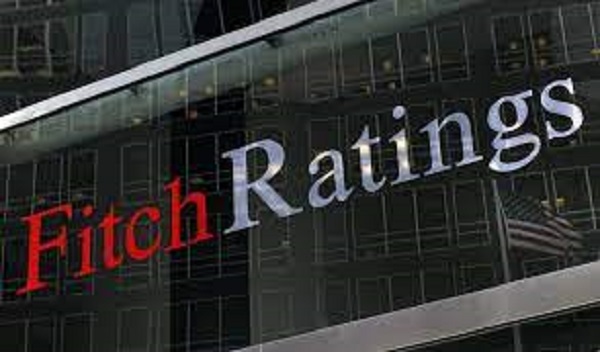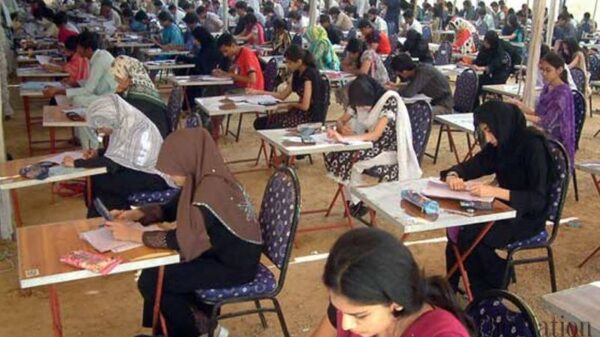Fitch Ratings has upgraded Pakistan’s Long-Term Foreign-Currency Issuer Default Rating (IDR) from ‘CCC’ to ‘CCC+’. Fitch generally refrains from assigning Outlooks to sovereigns with ratings of ‘CCC+’ or below.
This upgrade reflects increased confidence in Pakistan’s ability to secure external funding, supported by the recent staff-level agreement (SLA) with the IMF for a new 37-month $7 billion Extended Fund Facility (EFF).
The positive impact of the previous, shorter IMF arrangement was evident in Pakistan’s progress in reducing fiscal deficits and rebuilding foreign exchange reserves. Continued improvements are anticipated.
However, Pakistan’s substantial funding requirements mean it remains vulnerable if it fails to implement necessary reforms, which could jeopardize the program’s performance and funding.
New IMF Program:
On July 12, Pakistan and the IMF reached the SLA. Prior to IMF Board approval, expected by the end of August, the government needs to secure new funding assurances from key bilateral partners, including Saudi Arabia, the UAE, and China, totaling approximately $4 billion to $5 billion throughout the EFF.
Fitch believes this is feasible given the strong history of support and significant policy measures outlined in the recent budget for the fiscal year ending June 2025 (FY25).
Ambitious Reforms:
Under the new EFF, Pakistan aims to address long-standing structural issues in its tax system, energy sector, and state-owned enterprises. The program also includes commitments to exchange rate flexibility and enhancements in monetary policy. One of the targets is a 3 percentage point increase in tax revenues as a share of GDP, from under 9% in FY24, including higher taxes on the influential agricultural sector, which will require provincial-level legislation.
Recent Policy Performance:
Pakistan successfully completed its nine-month Stand-by Arrangement with the IMF in April. Over the past year, the government has increased taxes, reduced spending, and raised electricity, gas, and petrol prices. Additionally, it has nearly eliminated the gap between interbank and parallel market exchange rates through measures targeting the black market and regulating exchange houses.
Narrowing External Deficit:
Fitch projects that the current account deficit (CAD) will remain relatively stable at around USD 4 billion (approximately 1% of GDP) in FY25, following about $700 million in FY24, due to tight financing conditions and subdued domestic demand. Economic and fiscal policies, lower commodity prices, and rupee depreciation have significantly reduced the CAD from over $17 billion in FY22. FX shortages have eased with the return of remittances to the official banking system, reversing their decline in the second half of 2022.
Large Funding Needs:
Pakistan faces over USD 22 billion in external public debt maturities in FY25. This includes $13 billion in bilateral deposits and loans that are regularly rolled over, nearly $4 billion in State Bank of Pakistan (SBP) liabilities, approximately $4 billion from Chinese commercial banks, and $4 billion from multilateral creditors. The next international bond maturity is in September 2025.
The government claims to have identified over $24 billion in gross external financing, primarily from bilateral and multilateral sources, not including potential bond issuance or renewal of the oil facility with Saudi Arabia, but including a possible Panda bond issuance. Other potential sources of funding include foreign direct investment, non-resident portfolio inflows, and climate-related finance.
Reserves Status:
The SBP is working to rebuild FX reserves, buoyed by new funding inflows and limited CADs. Official gross reserves, including gold, are estimated to have risen to over $15 billion in June 2024 (around three months of imports), up from nearly $10 billion in June 2023. Reserves are expected to reach nearly $22 billion by the end of fiscal year 2026, approaching their peak in 2021. The SBP’s narrower measure of net liquid FX reserves (excluding gold and FX reserve deposits of banks) recovered to over $9 billion in June 2024. The SBP has also reduced its forward liabilities to local banks and is nearing a balanced net foreign asset/liability position.
Fiscal Consolidation:
The revenue effort under the EFF is front-loaded in the FY25 budget, which was developed with IMF staff and projects a headline deficit of 5.9% of GDP and a 2.0% primary surplus (compared to FY24 estimates of 7.4% and 0.4%, respectively). Fitch’s forecasts assume partial implementation of these measures, predicting a primary surplus of 0.8% of GDP and an overall fiscal deficit of 6.9% of GDP in FY25, improving to 1.3% of GDP and 6% of GDP, respectively, in FY26. The budget also assumes a doubling of SBP dividends to 2% of GDP and a doubling of provincial surpluses to 1% of GDP.










